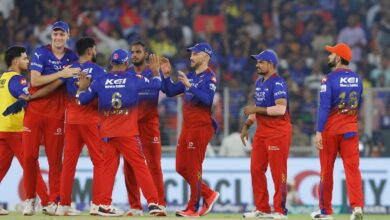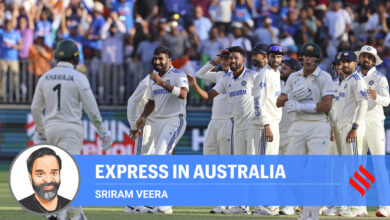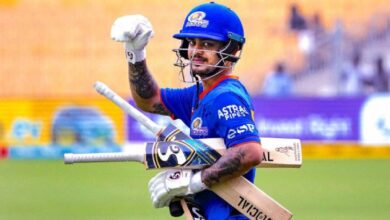Asian Games: Contending with wind hazard and reduction in 120 shots to 60, help 3-Position shooters | Asian-games News

A team gold in both the men’s and women’s 50m three position rifle event, with an individual gold and silver for the women and an individual silver for the men has underlined the strength in depth that India now holds in an event where it has been horically weak.
While Sift Kaur Samra’s world record effort has been the best performance among all Indian shooters at this Asian Games, yesterday Aishwary Pratap Singh Tomar’s silver medal and Swapnil Kusale’s 4th position after a poor 7.6 dropped him from the leading spot to outside the medal positions, reiterated how Indians have grown at the discipline, with less than a year to go for the Paris Olympics.
While the 10m air rifle and air pol events take place in indoor halls, the 50m events take place in open halls and that means that these shooters have an added layer of difficulty to contend with – wind. According to former Indian 50m 3P coach Joydeep Karmakar, just getting the shooters to acknowledge and accept that they needed to train with wind conditions in mind, was the start.
“I never doubted the talent of Indian shooters but some technical issues separated the 10m guys and the 50m guys. Wind plays a huge factor in 50m 3-position. What I found was Indian shooters lacked the capability to shoot in wind and difficult conditions and wouldn’t come close to their best results. Working around wind is almost as essential as working on your basic technique,” said Karmakar to the Indian Express.
Earlier before the World Championships, Aishwary, who will work with Karmakar in Bhopal, talked about how he has started to instinctively shade shots – a technique where shooters look at the wind, based on flags provided at the range and use gut-feel physics to make decisions on their shots.
“Not everyone can be good at shading. Where to shoot, what judgements to make – even in the team, not many shooters like to use shading and only do it when coaches are asking them to do it. But it’s a part of my system now. If I see the flag move a little to the right, even if I don’t want it, my body automatically nudges to the top left,” he had said to the Indian Express in August.
The confidence to make these shots though was where the problem arose. Karmakar felt that one of the reasons Indian shooters failed in Tokyo was that there was an almost mechanical approach to the sport where the individuality of the shooter was lost and the desire to not make a make took centre stage. It was one of the first things he tried to get rid of as the coach.
“It is not about how perfect you are. It is about how strategic you are. They were so focused on perfection that they were shooting with a defensive mindset and were afraid of making makes to the point where their mindset was ‘I will not make a make’. The biggest philosophical change that we needed to implement was ‘I’m not afraid of making a make’.”
And then there was the competition domestically. At the 2022 World Championships, Swapnil Kusale won India’s first 50m 3P quota after coming second in qualification and then finishing fourth overall. Akhil Sheoran won the bronze medal at the 2023 World Championships to make sure two Indians will be competing at the event in Paris. All of them though, heavily benefitted from a change in rules in the 50m 3P event. A rule that made the sport from a 120-shot marathon into a 60-shot event.
Shorter matchesMost Read
1
Jawan box office collection day 22: Shah Rukh Khan’s blockbuster sees spike in numbers despite challenge from Fukrey 3, passes Rs 1030 crore worldwide
2
Karnataka Bandh News Live Updates: Hundreds of protestors detained as precaution; Dy CM Shivakumar says Bandh was not needed
See More
“The longer the match, the more expertise and endurance is required. And for building that level of endurance, it takes time,” says Deepali Deshpande, the coach of some of India’s top 50m 3P shooters in Sift Kaur Samra, Akhil Sheoran and Anjum Moudgil.
“The generation of Swapnil, Anjum and Akhil all shot 120-shot competitions in the juniors. They were talented but they required time to come to the top. But the moment the sport became a 60-shot one, the time taken to complete the event meant that their endurance was ahead of what was required. And the results started showing because of it.”
Deshpande also added that the only thing India used to really lack earlier was ammunition, equipment, and the ability to test barrels – all of which has gotten better as a better crop of shooters have come to the fore. “Europeans had the advantage of getting equipment at driving dance. It’s still not easy for us but every year we go and get equipment and ammunition tested and that’s helped this discipline tremendously as well,” she said.






